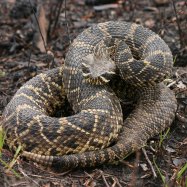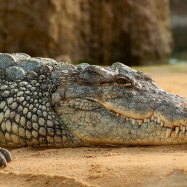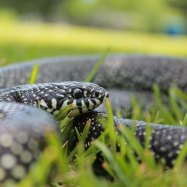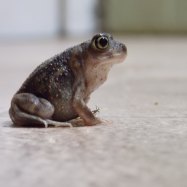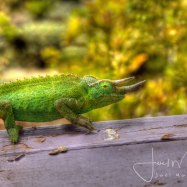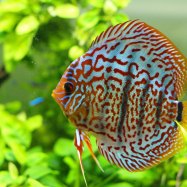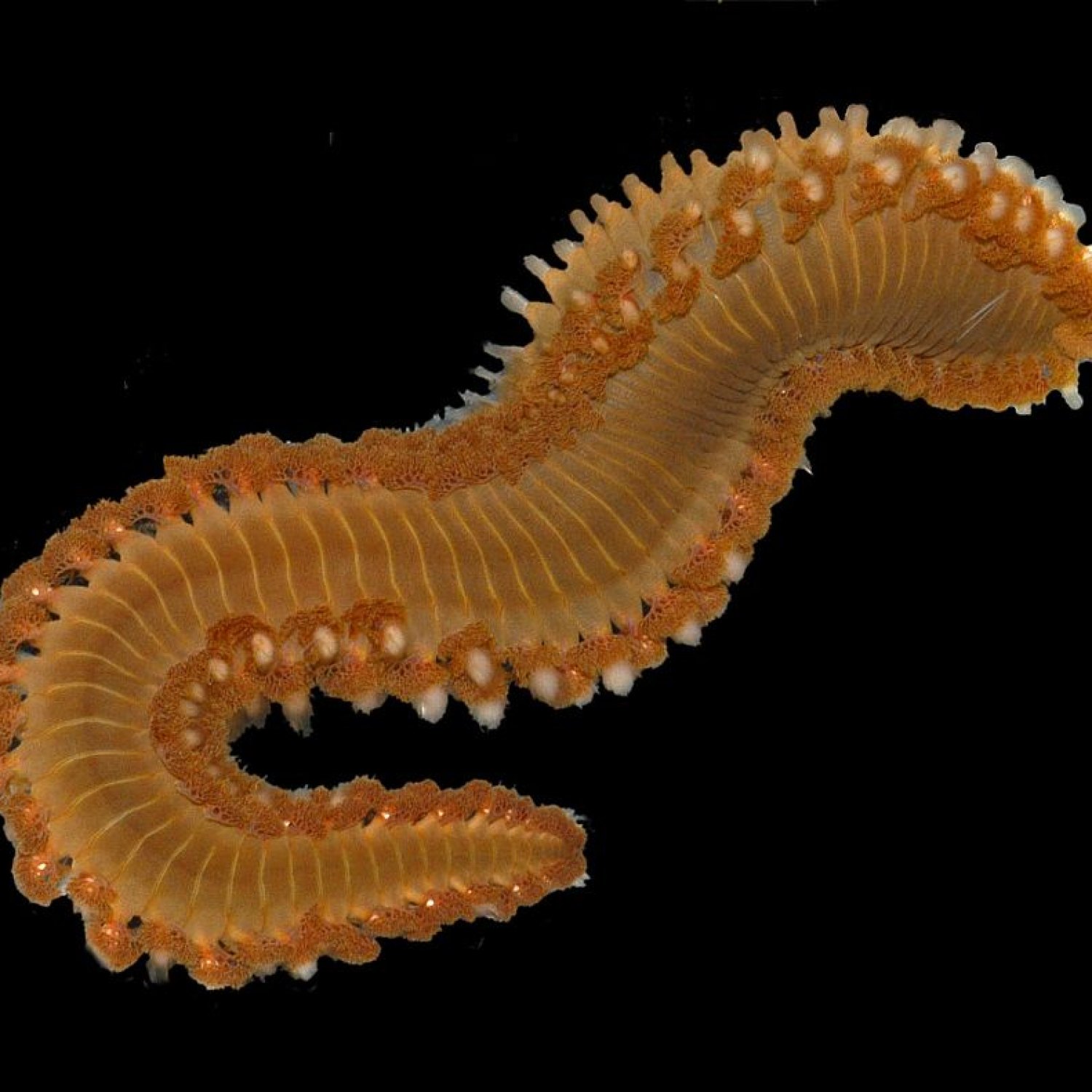
Bearded Fireworm
Up to 30 cm
Looking for a unique and colorful sea creature to add to your collection? Consider the Bearded Fireworm! With a maximum length of 30 cm, this long and cylindrical animal is commonly found in the Caribbean Sea, Gulf of Mexico, and along the eastern coast of North and South America. Belonging to the Amphinomidae family, its vibrant colors and distinctive mane of bristles make it a fascinating addition to any marine life display. Catch a glimpse of this beautiful creature while exploring the depths of the ocean.
Animal Details Summary:
Common Name: Bearded Fireworm
Kingdom: Animalia
Habitat: Coral reefs, rocky reefs, and seagrass beds
The Fascinating Creature: Bearded Fireworm
Picture yourself diving into the crystal-clear blue waters of the Caribbean Sea, admiring the vibrant colors of the coral reefs, and suddenly, you come across a bright orange to red creature, stretching up to 30 cm in length, with a long and cylindrical body, and covered in tiny bristles. You may think it is a strange type of worm, but it is actually a unique marine species called the Bearded Fireworm. This article will dive deeper into the world of this mysterious creature and its outstanding features.An Unusual Appearance
The Bearded Fireworm, scientifically known as Hermodice carunculata, is a species of polychaete worm found in tropical and subtropical waters Bearded Fireworm. This strange-looking creature has a long and slender body, with a deep orange to red coloration that makes it stand out from its surroundings. Its body is segmented, covered in tiny bristles, and has a distinct beard-like tentacle on its head, which is used for grabbing and holding onto its prey. These features give the Bearded Fireworm a unique and unusual appearance, making it hard to miss in its natural habitat.Classification and Distribution
The Bearded Fireworm belongs to the Animalia kingdom, Phylum Annelida, Class Polychaeta, Order Amphinomida, and Family Amphinomidae. Its taxonomic classification indicates that it is closely related to other marine worms, such as the sandworm and ragworm. This species is native to the Atlantic Ocean and can be found along the eastern coast of North and South America, as well as in the Caribbean Sea and the Gulf of Mexico.An Enviable Habitat
These fascinating creatures can be found in a variety of marine environments, including coral reefs, rocky reefs, and seagrass beds. They are typically found in shallow waters, ranging from 1 to 20 meters deep, where they can easily find food and reproduce. The Bearded Fireworm prefers to live in warm waters, making the Caribbean Sea and the Gulf of Mexico ideal habitats for them Barn Spider.A Carnivorous Diet
Bearded Fireworms are carnivorous creatures, meaning they feed on other marine animals. They have a well-developed proboscis with sharp jaws, which they use to capture and kill their prey. Their diet consists mainly of small crustaceans, mollusks, and other worms found on the ocean floor. They use their tentacle-like structures to grab and hold onto their prey, making them efficient hunters, and their bright coloration serves as a warning to potential predators.A Defense Mechanism
One of the most unique features of the Bearded Fireworm is its ability to defend itself against predators. As their name suggests, they have tiny bristles covering their body, known as chaetae, which are sharp and can cause painful stings. These stings can be dangerous to humans, causing mild to severe pain, swelling, and even numbness. Therefore, it is essential to handle these creatures with care and avoid coming into contact with them.The Importance of Bearded Fireworms
Despite their intimidating appearance, Bearded Fireworms play a vital role in their ecosystem. As scavengers, they help clean up dead organisms on the ocean floor, aiding in nutrient cycling. They also serve as prey for larger marine animals, such as fish and crabs, contributing to the food chain. Without the presence of Bearded Fireworms, the balance of marine life could be disrupted, impacting the entire ecosystem.A Threat to Coral Reefs
Although Bearded Fireworms are essential to the marine ecosystem, they can also pose a threat to coral reefs. As they feed on the coral polyps, they can cause significant damage to the reef's structure. When this happens, it can lead to coral bleaching and a decline in coral growth, affecting the entire reef ecosystem. As such, it is important to monitor their population growth and ensure the balance between predator and prey is maintained.A Danger to Human Activities
While Bearded Fireworms are predominantly found in their natural habitat, they can sometimes become a danger to human activities. In some Caribbean countries, where fishing and tourism are prevalent, they can accidentally be caught in fishing nets or cause injury to divers. It is essential to take precautions when swimming or diving in areas where Bearded Fireworms are known to inhabit.Research and Conservation Efforts
The Bearded Fireworm is still a relatively understudied species, and more research is needed to better understand its behavior and distribution. However, due to their potential threat to coral reefs and risk to human activities, some conservation efforts have been put in place. In certain areas, fishing restrictions have been implemented to protect the marine environment, and public awareness campaigns have been conducted to educate people about the dangers of these creatures.In Conclusion
In summary, the Bearded Fireworm, with its extraordinary appearance and unique features, is a fascinating creature found in the warm and shallow waters of the Caribbean Sea and the Gulf of Mexico. As a vital predator in its ecosystem, it plays a crucial role in maintaining the balance of marine life. However, its presence can also pose a threat to coral reefs and human activities. As such, it is essential to appreciate and understand this species, while also taking necessary precautions to ensure the safety of both humans and the environment.

Bearded Fireworm
Animal Details Bearded Fireworm - Scientific Name: Hermodice carunculata
- Category: Animals B
- Scientific Name: Hermodice carunculata
- Common Name: Bearded Fireworm
- Kingdom: Animalia
- Phylum: Annelida
- Class: Polychaeta
- Order: Amphinomida
- Family: Amphinomidae
- Habitat: Coral reefs, rocky reefs, and seagrass beds
- Feeding Method: Carnivorous
- Geographical Distribution: Tropical and subtropical waters
- Country of Origin: Native to the Atlantic Ocean
- Location: Caribbean Sea, Gulf of Mexico, and along the eastern coast of North and South America
- Animal Coloration: Bright orange to red
- Body Shape: Long and cylindrical
- Length: Up to 30 cm
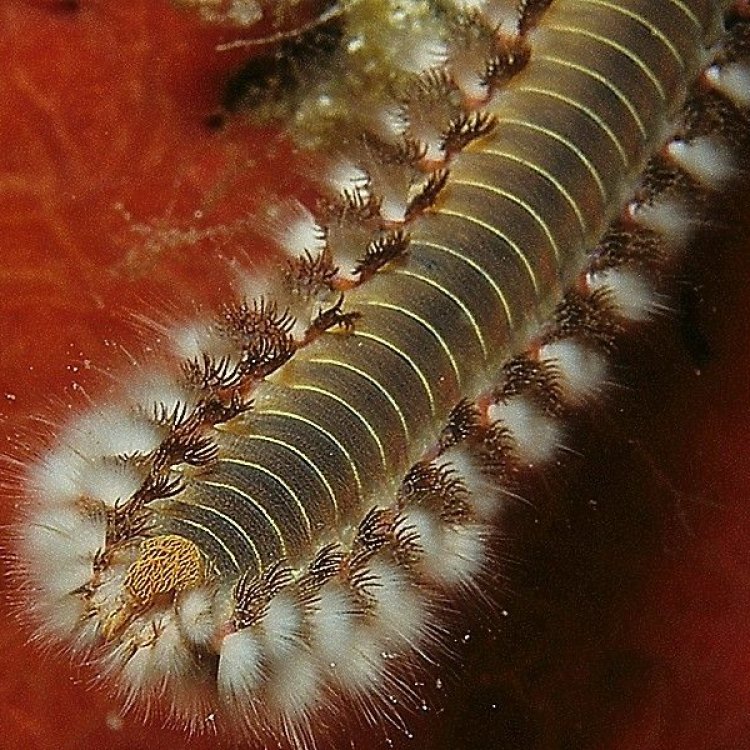
Bearded Fireworm
- Adult Size: Around 20 cm
- Average Lifespan: 1-2 years
- Reproduction: Sexual reproduction
- Reproductive Behavior: Broadcast spawning
- Sound or Call: No specific sound or call
- Migration Pattern: No specific migration pattern
- Social Groups: Solitary
- Behavior: Aggressive towards other species
- Threats: Predation, habitat destruction
- Conservation Status: Not evaluated
- Impact on Ecosystem: Can be a predator of coral species
- Human Use: Not used by humans
- Distinctive Features: Long bristles along the sides of the body, bright coloration
- Interesting Facts: The bristles of the Bearded Fireworm can cause a burning sensation and skin irritation in humans
- Predator: Predated upon by various fish species
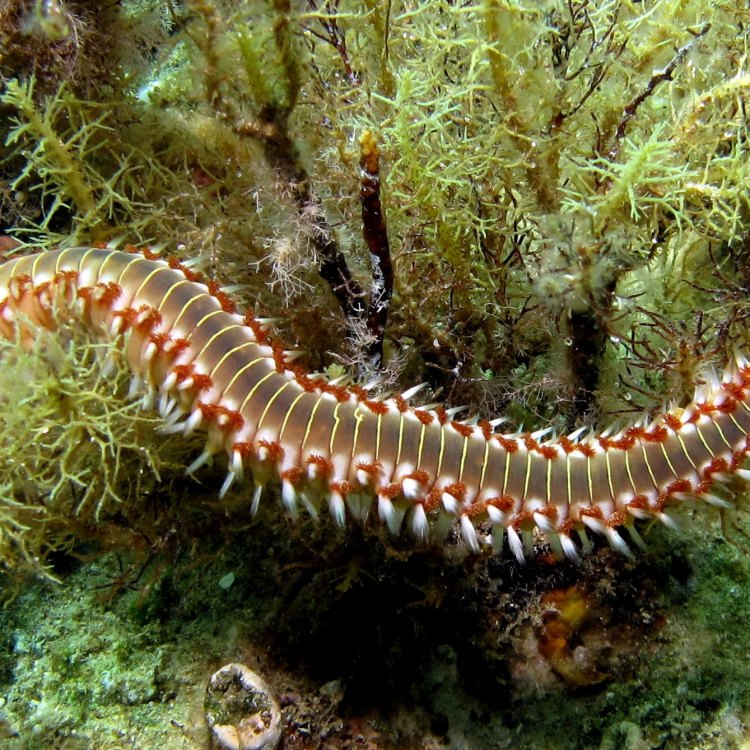
Hermodice carunculata
The Fascinating World of the Bearded Fireworm: A Colorful and Cryptic Creature
The oceans are home to an incredible array of creatures, from the tiniest plankton to the massive blue whale. And within this vast and diverse ecosystem, there are some truly unique and fascinating species that capture our imagination. One such creature is the Bearded Fireworm, a brightly colored marine worm that inhabits the warm waters of the Atlantic Ocean and the Mediterranean Sea.The Bearded Fireworm, scientifically known as Hermodice carunculata, is a member of the Polychaeta class, which comprises over 10,000 species of segmented worms PeaceOfAnimals.Com. But what makes this particular species stand out from the rest? Let's dive deeper into the world of the Bearded Fireworm and uncover its distinctive features, behavior, and impact on the marine ecosystem.
A Colorful and Cryptic Creature
The Bearded Fireworm is a striking creature with its bright coloration and unique physical features. Its body can reach up to 20 cm in length, making it one of the larger species of marine worms. Its body is elongated and has a flattened appearance with distinct segments, each bearing a pair of paddle-like appendages called parapodia.But what truly sets this species apart is the long bristles, or setae, that cover its body. These bristles are what give the Bearded Fireworm its common name, as they resemble a beard. These bristles are not only for aesthetics; they play a crucial role in the worm's survival. They are used for defense, movement, and even reproduction.
However, these bristles can be quite dangerous for humans Beaver. If touched, the bristles release a neurotoxin that can cause a painful burning sensation and irritation to the skin. It is advised to avoid contact with the Bearded Fireworm to prevent any potential harm.
A Rocky Beginning to Life
The life of a Bearded Fireworm begins in the ocean, where the females release eggs that are then fertilized by the males through sexual reproduction. The fertilized eggs develop into larvae, which spend a few weeks drifting in the water column before settling onto the ocean floor. Once the larvae have settled, they undergo metamorphosis and develop into the adult worm.But it's not an easy journey for these tiny larvae. They face many threats, such as predation and habitat destruction. Their survival rate is quite low, with only a small percentage reaching adulthood. This is why the Bearded Fireworm has a relatively short lifespan, lasting only one to two years.
Reproduction and Behavior
As mentioned before, the Bearded Fireworm reproduces through sexual reproduction. However, what's interesting to note is their reproductive behavior, known as broadcast spawning. This means that both the males and females release their eggs and sperm into the water column at the same time, increasing the chances of fertilization.After fertilization, the female worms will release eggs in batches, ensuring a continuous supply of offspring. This strategy allows for a higher chance of survival since not all eggs may hatch at the same time. The Bearded Fireworms also have a solitary lifestyle, meaning they do not form social groups and prefer to live alone.
A Not-So-Fireworm?
Despite its fiery name, the Bearded Fireworm does not actually produce any fire or have any specific sound or call. It is a relatively cryptic creature, with no specific migration pattern. They can be found in warm and shallow waters, often hiding in crevices and under rocks to avoid predators.They are also known for their territorial and aggressive behavior towards other species, especially smaller animals. The Bearded Fireworm is an omnivore, feeding on small invertebrates, algae, and even coral species. This makes them a potential predator of coral reefs, which are already facing severe threats from climate change and human activities.
Predator vs. Prey
While the Bearded Fireworm may be a predator to some marine species, it also has its fair share of predators. Various fish species have been observed preying on Bearded Fireworms, including triggerfish, grouper, and wrasses. These predators have been known to develop strategies to avoid contact with the worm's toxic bristles, such as flipping them over to attack their non-bristled underside.However, the Bearded Fireworm has a unique ability to regenerate its bristles, making them a resilient species in the face of predation. This adaptation allows them to continue to thrive in their marine habitat despite facing threats from predators.
The Human Impact
As with most marine creatures, the Bearded Fireworm is also facing threats from human activities. The destruction of their habitat, such as coral reefs and mangroves, can significantly impact their survival. Pollution and overfishing also pose a threat, as it disrupts the delicate balance of the marine ecosystem that the Bearded Fireworm relies on for its food and shelter.Thankfully, the Bearded Fireworm is currently not evaluated on the IUCN Red List, which means there are no significant concerns about its conservation status. However, it is essential to monitor their population and protect their habitats to prevent any future decline.
The Bearded Fireworm's Human Use
While humans do not directly use the Bearded Fireworm, there are some interesting ways in which this species plays a role in human activities. In some cultures, the worms are considered a delicacy and are used as bait for fishing. They are also used in scientific research, especially in the field of ecology, as their presence can give valuable insights into the health of their marine habitat.The Enigmatic Bearded Fireworm
In an ocean teeming with life, the Bearded Fireworm stands out as a visually striking and cryptic creature. From its bright coloration and unique bristles to its territorial behavior and impact on the ecosystem, this marine worm has captured the attention of scientists and curious ocean explorers alike.As we continue to learn more about the Bearded Fireworm, it's crucial to understand the delicate balance of the marine ecosystem and the role each species plays. By protecting creatures like the Bearded Fireworm, we can ensure the sustainability of our oceans for generations to come. Let us not overlook the smallest and most mysterious creatures of our oceans, for they hold the key to unlocking the secrets of the deep.
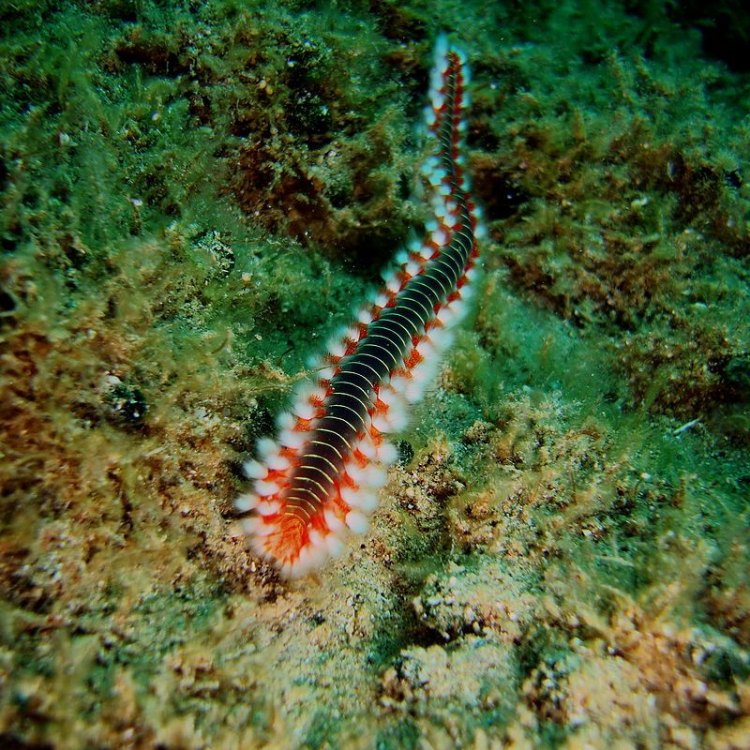
The Fascinating Creature: Bearded Fireworm
Disclaimer: The content provided is for informational purposes only. We cannot guarantee the accuracy of the information on this page 100%. All information provided here may change without prior notice.


